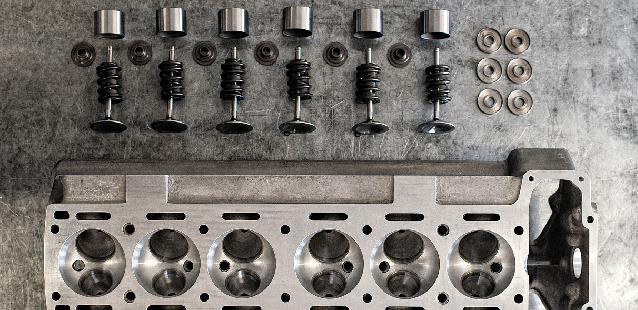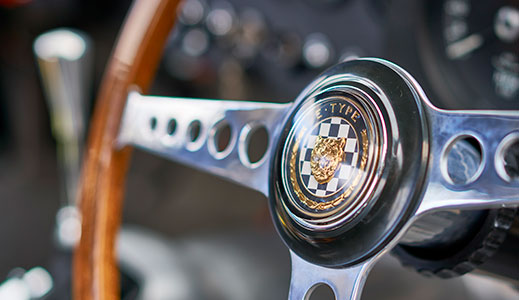Light at Heart: Jaguar's Aluminium XK Engine
The 3.8-litre in the Lightweight E-type uses a wealth of
race-inspired technology from Jaguar's D-types, including an aluminium block...

It's not only the outside where aluminium transforms the Lightweight E-type's style and performance. The XK engine at the heart of the car uses an aluminium block, instead of the typical cast iron block used on standard E-types at the time.
In fact, Jaguar's iconic XK engine has a fascinating story all of its own. It all starts towards the end of the Second World War, when company founder William Lyons and three of his top engineers - William Heynes, Walter Hassan and Claude Baily - spent Sunday nights on fire-watching duty on the roof of the Foleshill factory, during which time they plotted the blueprint for resuming production once hostilities ended.
Having used engines from Standard on their pre-war cars, Lyons wanted Jaguar to develop its own engine in-house. It had to be highly advanced, developing 160bhp - a target plucked out of thin air, but significantly more powerful than any production car engine to date. It also needed a design that was flexible enough to use in both saloons and sports cars - evolving alongside Jaguar's range, long into the future.
Several 2.0-litre four-cylinder concepts were created, but none developed enough horsepower, or would have appealed to the US market that was crucial for post-war export sales. Instead, a larger, more powerful six-cylinder 3.4-litre design was commissioned. Its motorsport-inspired twin-overhead camshaft layout was highly unusual, offering customers cutting-edge technology in an era in which side valves were still commonplace. It also looked stunning when the bonnet was lifted.
The XK engine was originally intended for the Mark VII saloon, but delays to the chassis design meant the engine made its debut in the XK120 - a sports car that caused a sensation when it was unveiled at the 1948 London Motor Show, with a top speed of 120mph and a price tag of just £998 (before tax).
The XK120 went on to set a series of production car speed and endurance records, including a 133mph run along the arrow-straight five-mile Belgian A10 autoroute just outside Jabbeke in 1949, a seven-day run at 100mph at the Montlhery oval in France and an astonishing 172mph in a modified XK120 at Jabbeke in 1953. The XK engine also went on to power the legendary C-type and D-type racers that took five wins at the Le Mans 24 Hours between 1951 and 1957.
In fact, the XK engine was so cutting-edge that it went on to power almost every Jaguar saloon and sports car made for the next 40 years - including, of course, the original E-type. When it came to creating the Lightweight E-type in 1963, Jaguar used an updated version of the engine in its larger 3.8-litre form, with a wide-angle aluminium head that had been developed for the Le Mans 24 Hours-winning D-types.
The updated design included a race-inspired dry sump lubrication system, which used a scavenge pump to collect oil from the sump and return it to a separate tank. This eliminated oil surge and the risk of engine damage during fast cornering. In place of the cast iron block, Jaguar also manufactured an aluminium block for the Lightweight E-type, which substantially reduced weight over the front wheels for better handling.
In both forms, the 3.8-litre XK engine developed in excess of 300bhp, with torque in the region of 280lb-ft at 4,500rpm - pretty powerful by the standards of the day. Unfortunately, a lack of factory support, as Jaguar focused on production of its increasingly popular road-car models, meant the E-types were no match for the V12 engines in the rival Ferrari at Le Mans.
The 3.8-litre XK engines for today's re-born Lightweight E-type have been built by renowned historic specialists Crosthwaite and Gardiner, to the original specification - including the aluminium block. As back in the day, customers were offered a choice of either Weber carburettors as standard or the option of a Lucas mechanical fuel injection system - with Stratstone opting for the Weber carbs on car No. 15.
For how our engine was built, view our timelapse video here.
Discover More
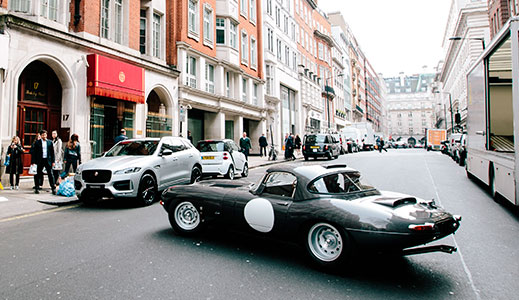
A New Home In Mayfair London
The Jaguar Lightweight E-type arrives at Stratstone's London showroom
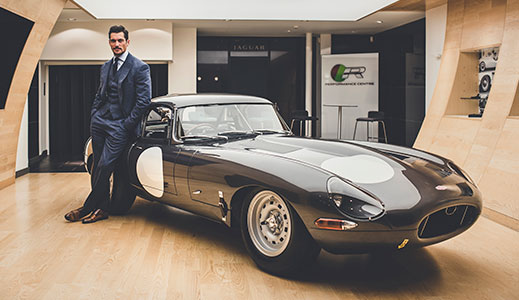
David Gandy Visits the E-type
Britain's leading male model talks about his passion for style and cars
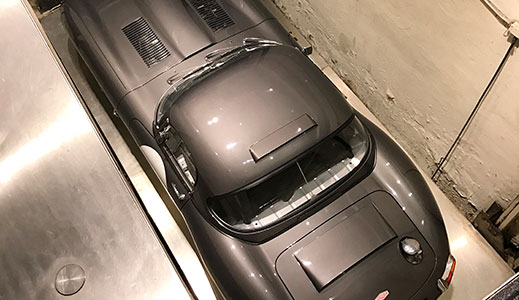
Exclusive Appearance in Mayfair
YouTube influencer and car enthusiast Shmee150 visits the Lightweight E-type

